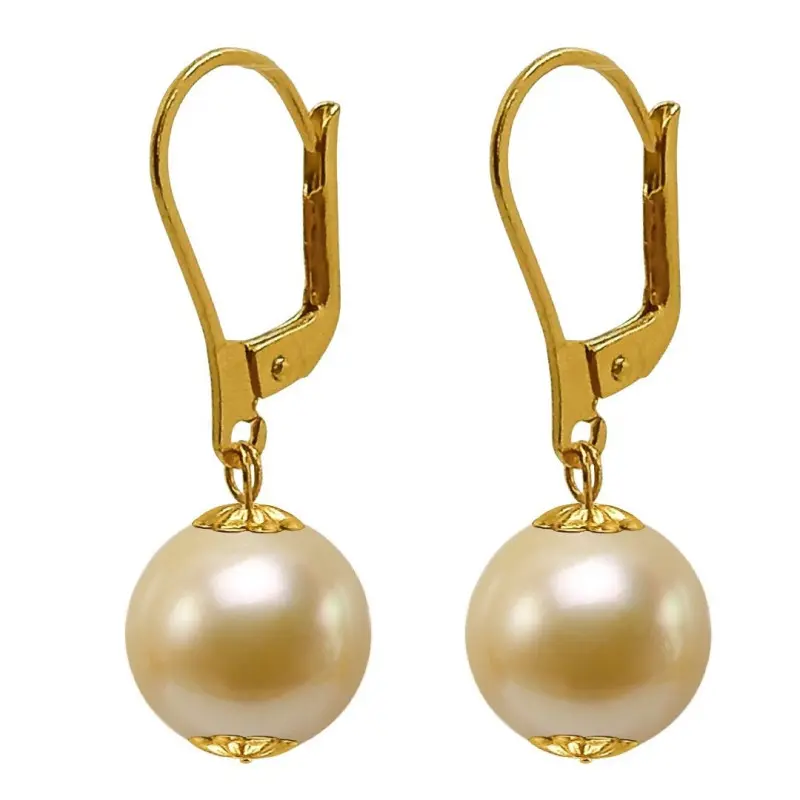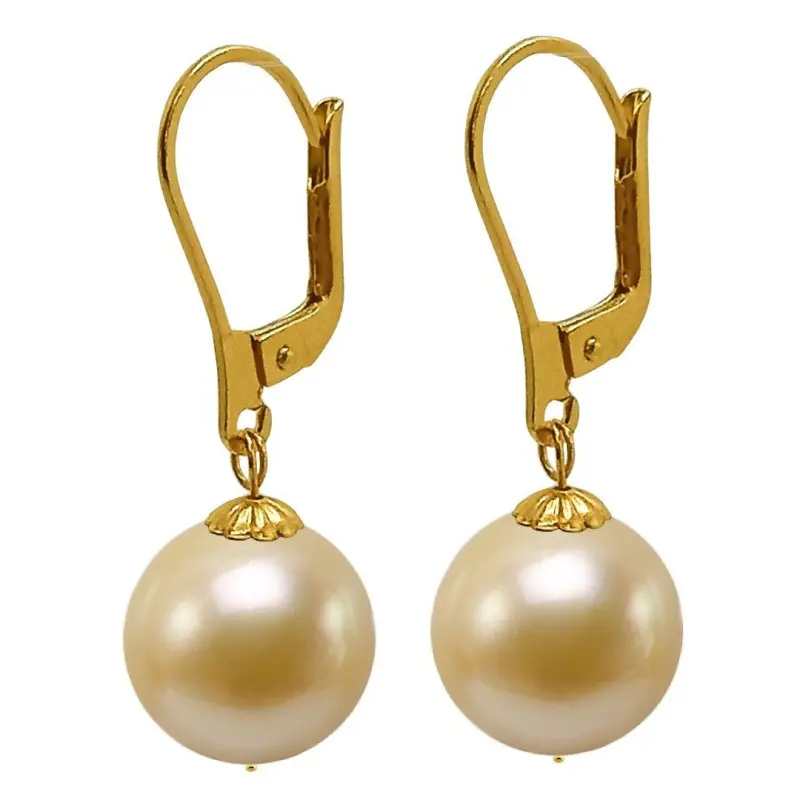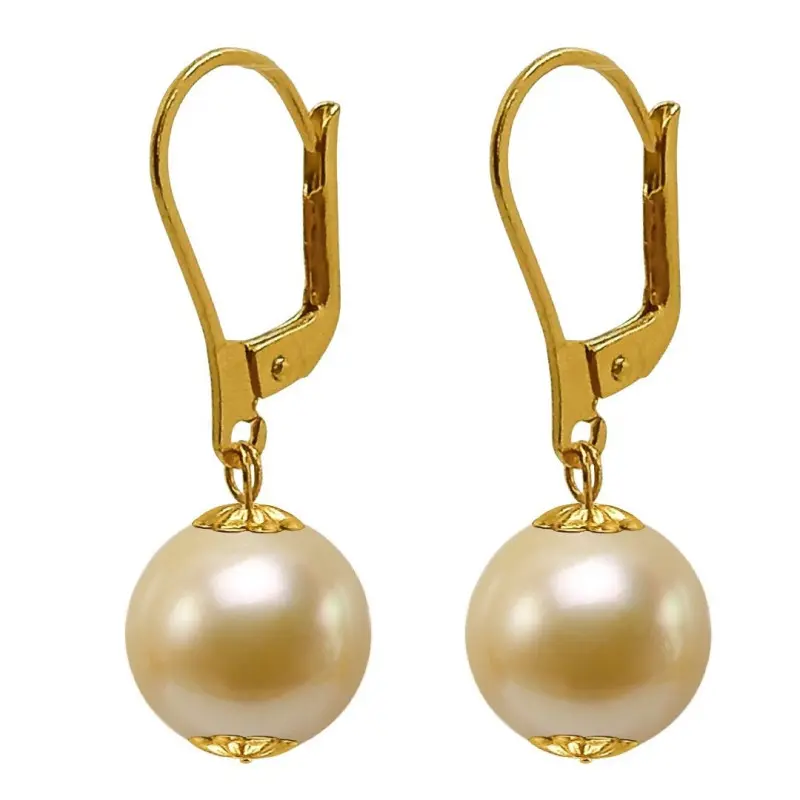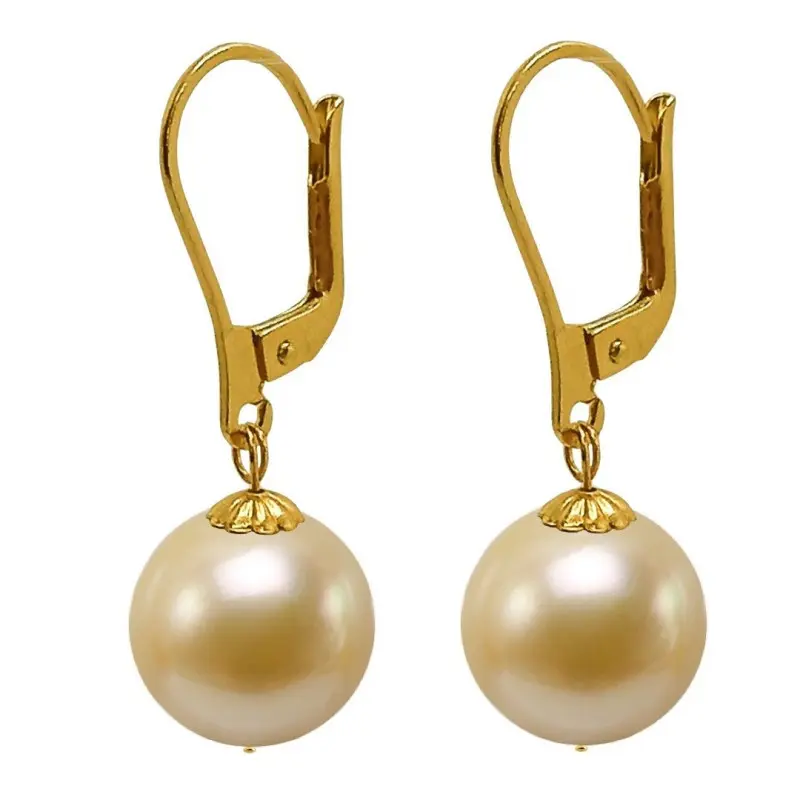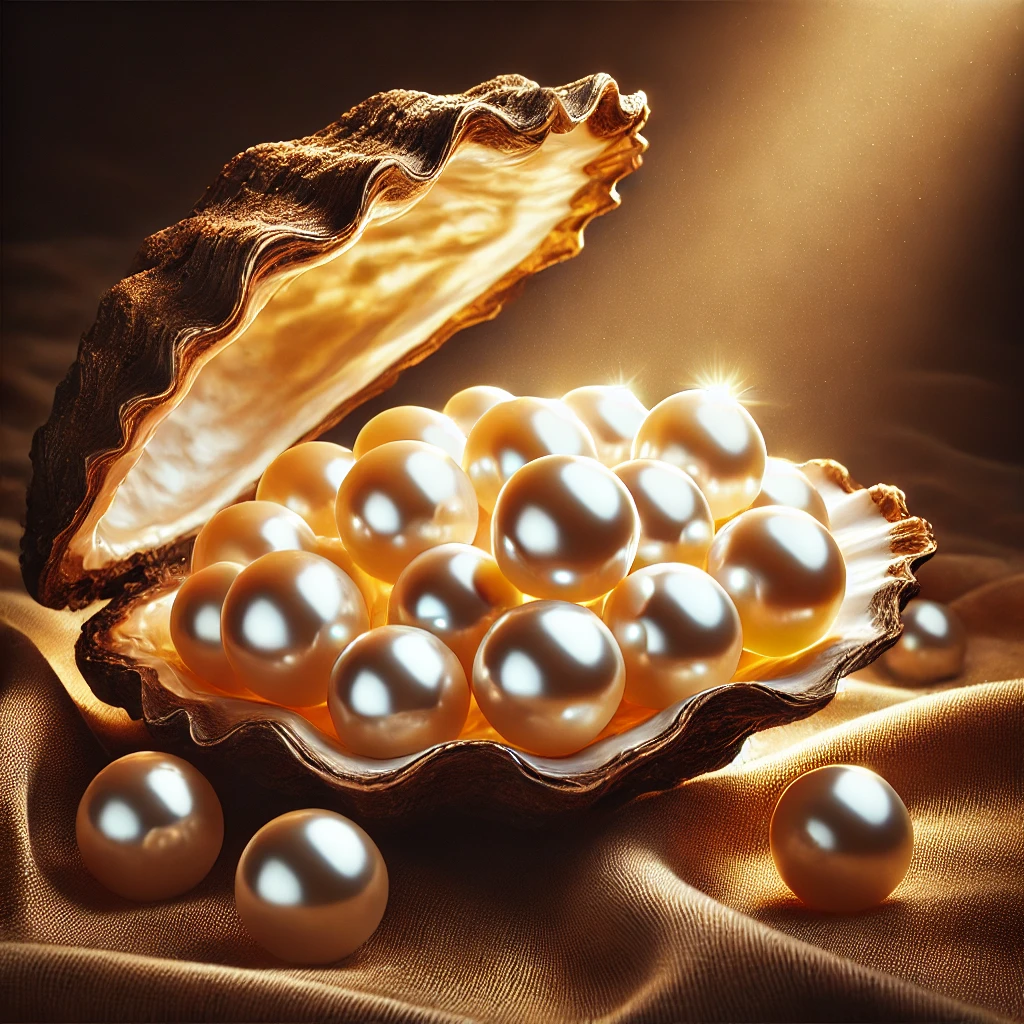
Golden South Sea pearls are among the largest, most spectacular, and most valuable in the world of pearls. The price of a necklace can start at $10,000 and go up to $300,000. They are cultivated in a giant mollusk with golden edges, the Pinctada maxima. Due to its rarity and the sensitivity it shows during pearl growth, cultivating them is very challenging and significantly more expensive than other saltwater pearls.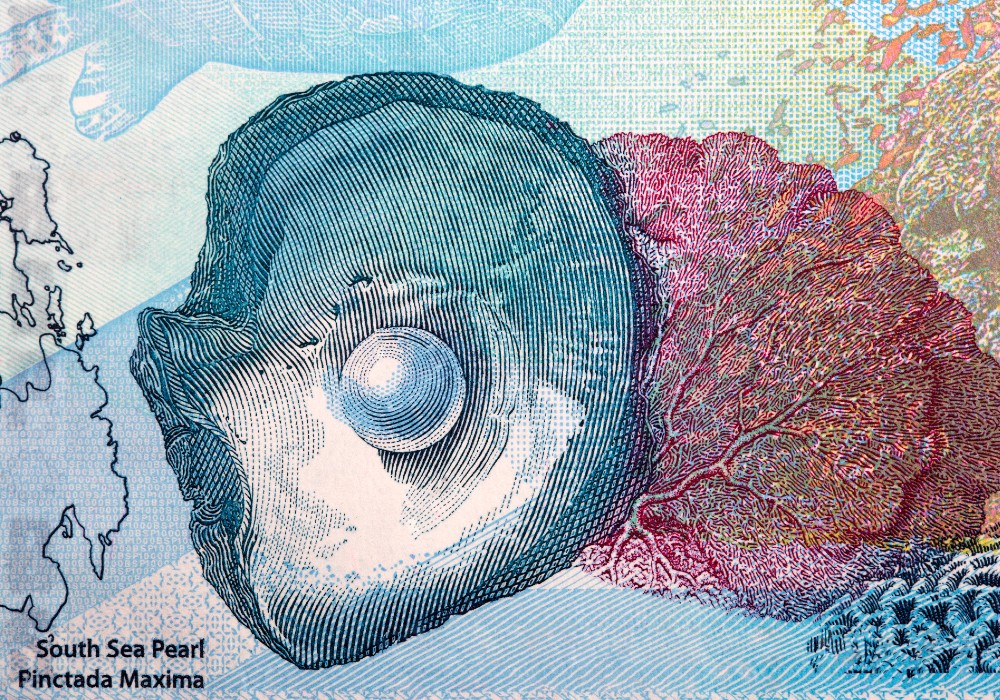
Why are they the most valuable pearls in the world?
These pearls have an exceptionally thick nacre, between 2 and 4 mm, and the longest formation time after Edison pearls. While an Akoya pearl is created in 1-2 years, and a Tahitian pearl in approximately 2-3 years, a South Sea pearl requires 377 steps over 4-5 years to reach its ideal size.
With such a thick nacre formed over years, the nacre layers are not always spherical; many have a drop, button, or baroque shape.
They are the largest saltwater pearls: while an 8-10 mm Akoya pearl is considered large, this size is standard for South Sea pearls, which are the most sold in this size. There are larger pearls, 13-14 mm, and even giant ones, 16-18 mm, with exorbitant prices, found only in the private collections of the world's wealthiest individuals.
 One of the most precious specimens was created over 37 years, during which 35 giant pearls, 18 mm in size, perfectly matched, were harvested and grown in the pristine waters of Palawan, where the ideal aquatic environmental conditions were met.
One of the most precious specimens was created over 37 years, during which 35 giant pearls, 18 mm in size, perfectly matched, were harvested and grown in the pristine waters of Palawan, where the ideal aquatic environmental conditions were met.The value of a South Sea pearl, besides its size and surface imperfections, is closely linked to the intensity of its color. They exhibit a coloration that starts from white, but it is a white with silvery tones, specific to this type of pearl, and transitions through light yellow to a very strong golden hue. The most expensive ones have a shade resembling 24-karat gold.

The Science Behind Beauty
The visual phenomenon behind nacre, luster, and the golden color is achieved through the unique, compact arrangement of aragonite layers (extremely small, hexagonal calcium carbonate crystals, measured in microns) bonded with conchiolin (“glue” secreted by the mollusk, acting as a cement that binds the "bricks"). The pearl's color is determined by this "glue," with conchiolin exhibiting shades of orange, brown, or reddish hues that, together with other specific factors, define the pearl's final color. The denser and more compact the layers of aragonite and conchiolin, the more intense the luster, color, and orient perceived on the pearl's surface.
Where do they come from?
While most white South Sea pearls come from Australia, the golden ones come in a very large percentage from the Philippines and Indonesia. Grown in the waters of the most exotic beaches, they seem to borrow the beauty of their surroundings.
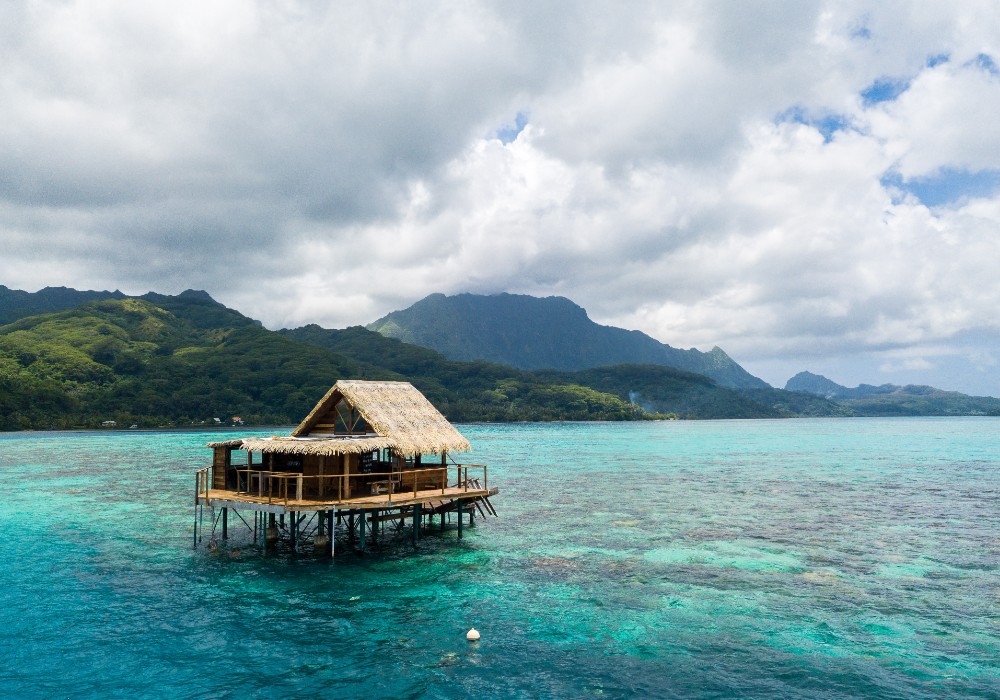
In Australia, around the 1850s, the "pearl rush" began, causing the small village of Broome on Australia's northwest coast to flourish instantly. Today, there is even a museum dedicated to that glorious era, where you can hear the stories of pearl cultivators from the past.

After reaching maturity and a considerable size, they are sold at auctions organized by major South Sea cultivators, in mixed batches of white and golden pearls. These auctions are held only a few times a year in Japan and Hong Kong. Due to their rarity, the global stock is extremely limited, so few stores carry South Sea pearl jewelry. Our store has contracts with pearl farms worldwide to maintain optimal stocks for jewelry crafted in our own design studio under the KASKADDA brand, registered in 27 countries across Europe.
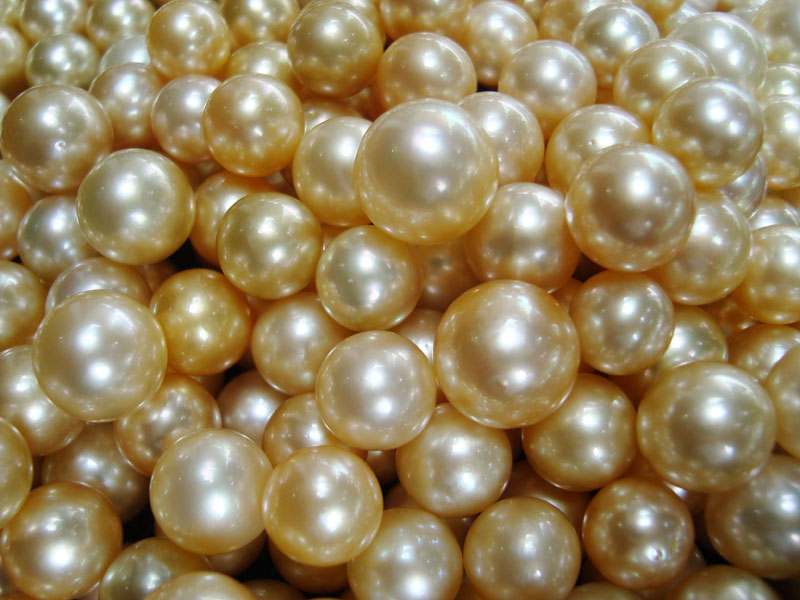
Inclusions are the marks left by Mother Nature on the surface of pearls. Only fake pearls have a perfect surface, while a natural pearl always has a characteristic mark that makes it unique. Depending on the quality of the pearl, the surface may have more or fewer inclusions. These can take the form of indentations, small dots as if pricked with a needle, lines (growth rings), or nacreous protrusions.
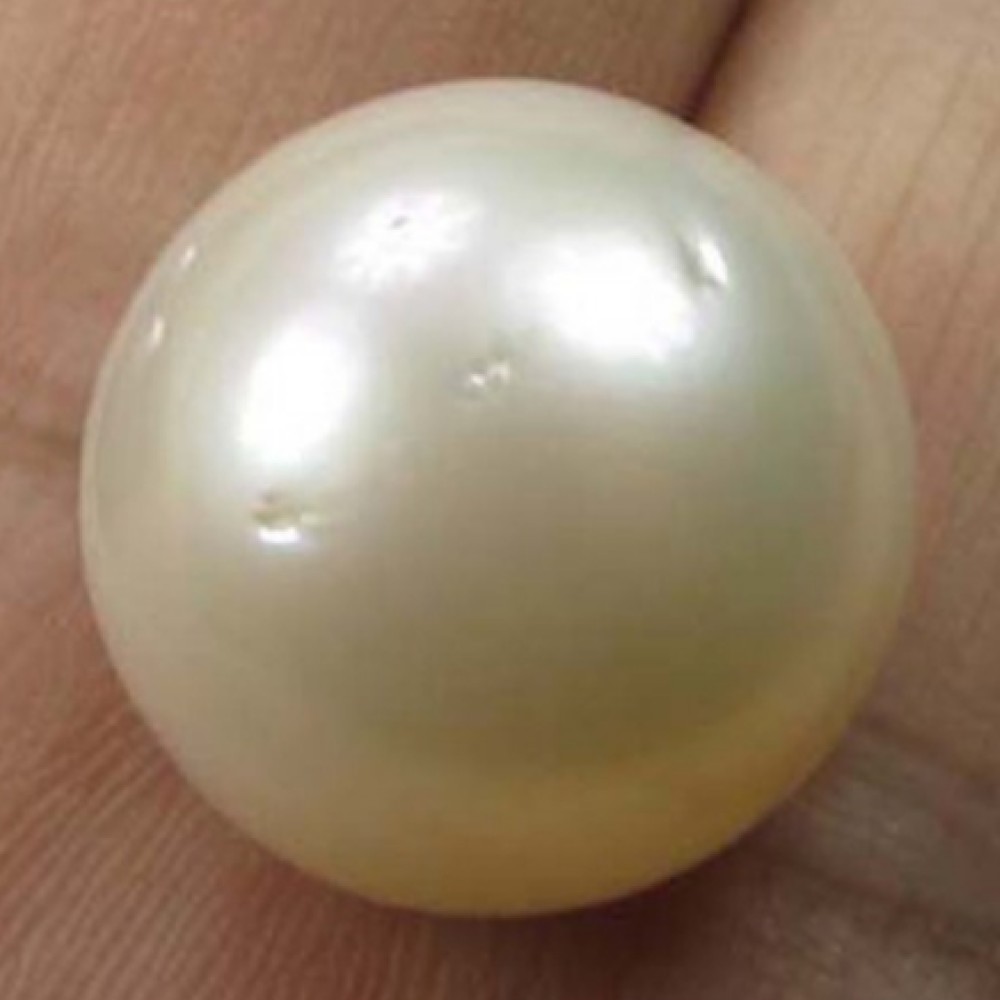
The jewelry crafted by our store is handmade, personalized, and uses South Sea pearls of the highest quality. Additionally, they are delivered in a luxurious wooden box and come with a certificate of guarantee and authenticity specific to premium natural pearls.
Thank you for reading our article! We invite you to discover our exclusive collections of natural pearl jewelry. Our jewelry is an excellent choice both for personal collections and as gifts for loved ones. Discover the Elegance of Natural Pearls in Our Exclusive Collections:
- Natural Pearl Earrings
- Natural Pearl Necklaces
- Natural Pearl Sets
- Natural Pearl Pendants
- Natural Pearl Bracelets
- Jewelry with Rare Edison Natural Pearls
- Jewelry with Rare Japanese Akoya Natural Pearls
- Jewelry with Rare Tahitian Natural Pearls
- Jewelry with Rare South Sea Natural Pearls
- Jewelry with Semi-Precious Stones
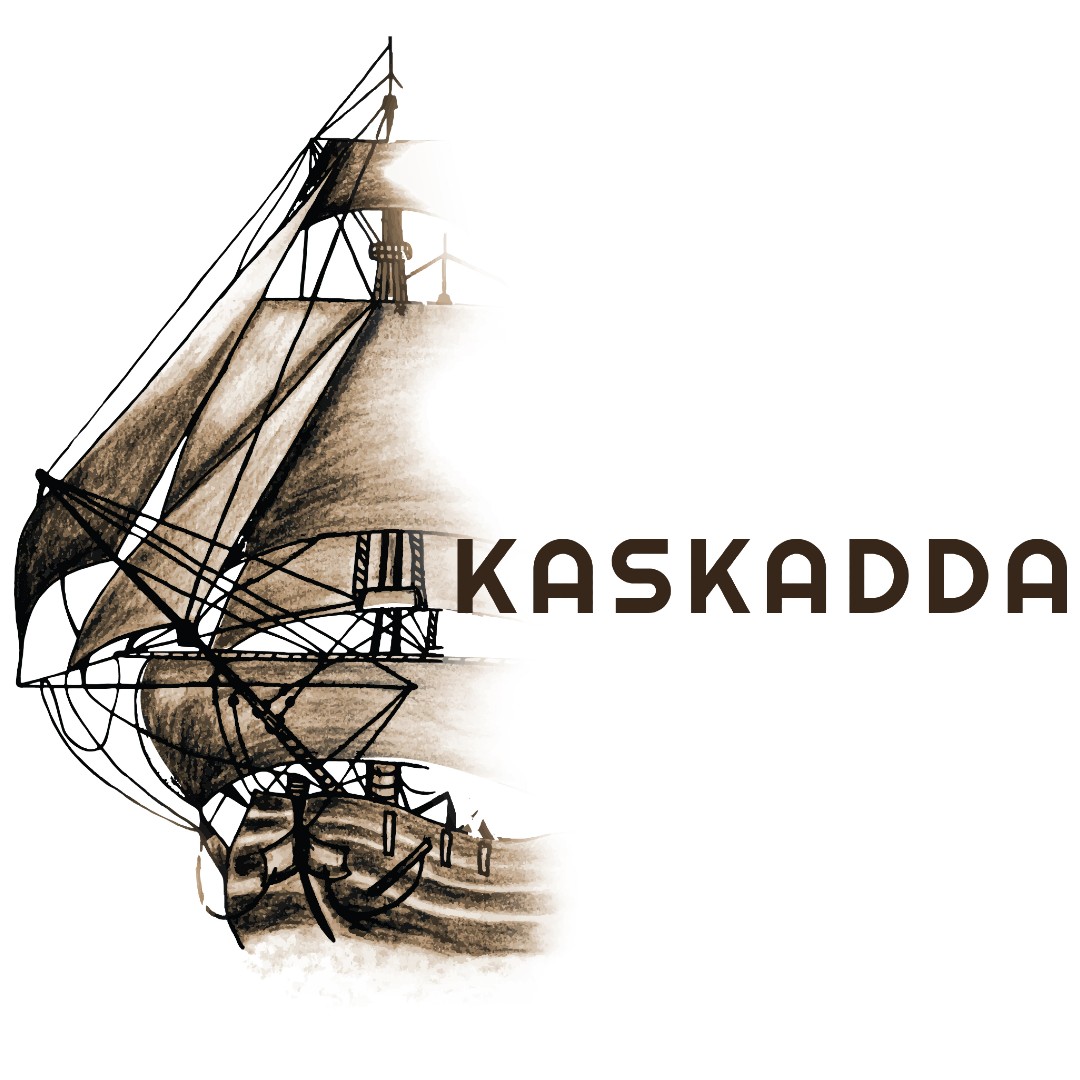
Kaskadda - trademark registered with the EUIPO in 27 European countries
Discover the authentic beauty of Kaskadda jewelry - a trademark registered with the European Union Intellectual Property Office (EUIPO) in 27 European countries.
One of our priorities was the protection of identity through the registration of the Kaskadda trademark with the European Union Intellectual Property Office (EUIPO) in no fewer than 27 European countries. This process ensured that our name, logo, and associated symbols benefit from legal protection in these countries, thus ensuring the authenticity and uniqueness of our products.
Kaskadda - authentic elegance, jewelry with a story!

